The High Sierra Trail is renowned for its breathtaking vistas and challenging climbs, and for many hikers, Guitar Lake serves as a pivotal and picturesque landmark on the journey to the summit of Mount Whitney. Day seven on this iconic trail marks a significant push, beginning at the serene shores of Guitar Lake and culminating in the triumphant ascent to the highest peak in the contiguous United States, before descending to the welcoming Outpost Camp.
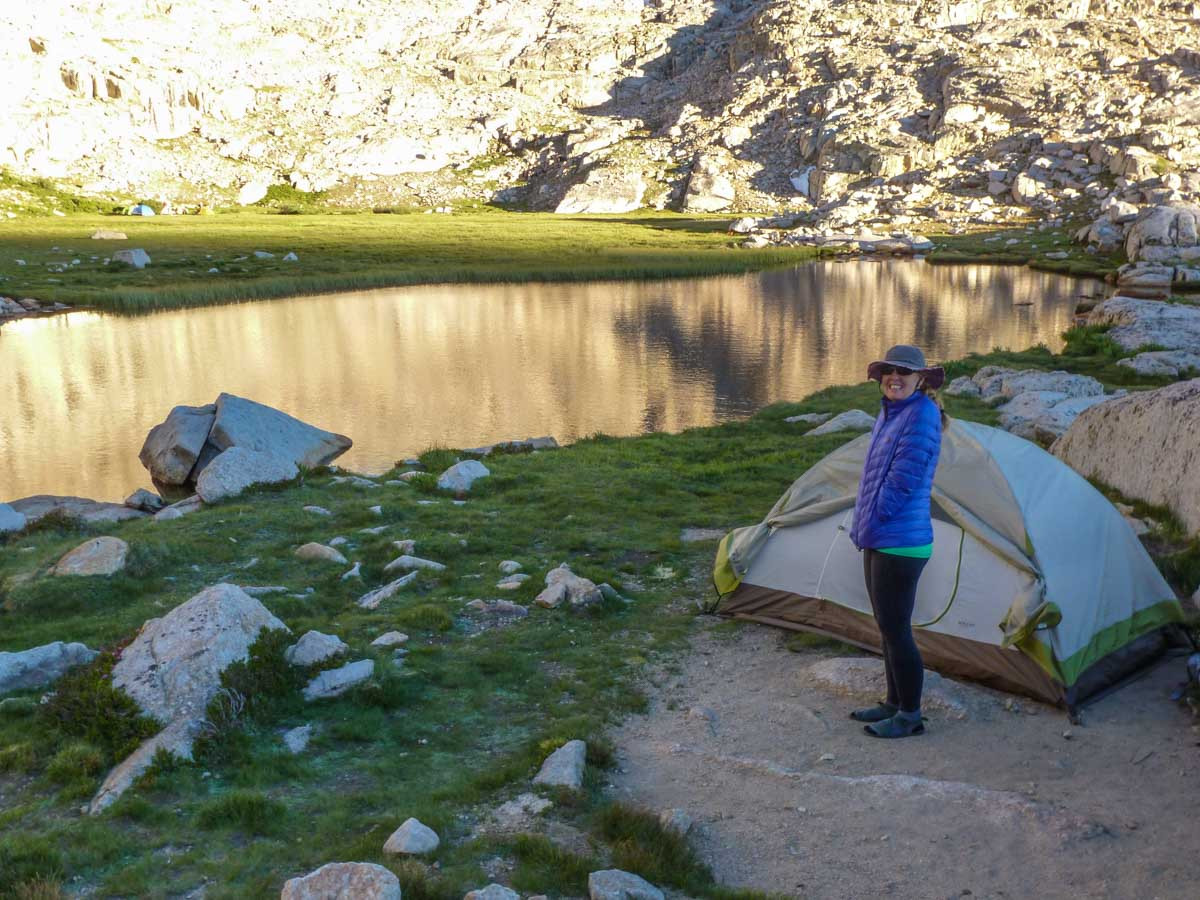 Early start at Guitar Lake
Early start at Guitar Lake
Waking Up at Guitar Lake and Starting the Ascent
The day began with a 4:30 a.m. wake-up call at the idyllic Guitar Lake. The decision to start hiking between 5:30 and 6 a.m., aligning with sunrise, was deliberate. Opting to fully experience the trail in daylight, rather than attempting a summit sunrise in the dark, was a choice made to appreciate every detail of this first-time ascent to Mt. Whitney. By 5:40 a.m., boots were on the trail. Whispers of boy scout groups departing earlier and the faint glows of headlamps traversing the ridges since midnight hinted at the day’s shared ambition among fellow hikers.
HST Day 7 presented a formidable itinerary:
Distance: 9.8 miles
Time: 9 hours
Difficulty: Strenuous
Elevation gain: 2,842 ft
Dogs: No
Best time to hike: July-Sept
As gear was stowed away, the distant Whitney ridge revealed a constellation of headlamps, a silent procession of hikers chasing the sunrise from the summit. Anticipations of a 4 to 5-hour summit push from Guitar Lake were in the air, yet personal goals were set higher. Fueled by days of rigorous hiking, the challenge was accepted to test the limits of seasoned bodies. The initial mile departing Guitar Lake proved to be a steep incline, rapidly gaining altitude, setting the stage for the switchbacks leading to Trail Crest.
The Climb to Trail Crest: Hitchcock Lakes and Switchbacks
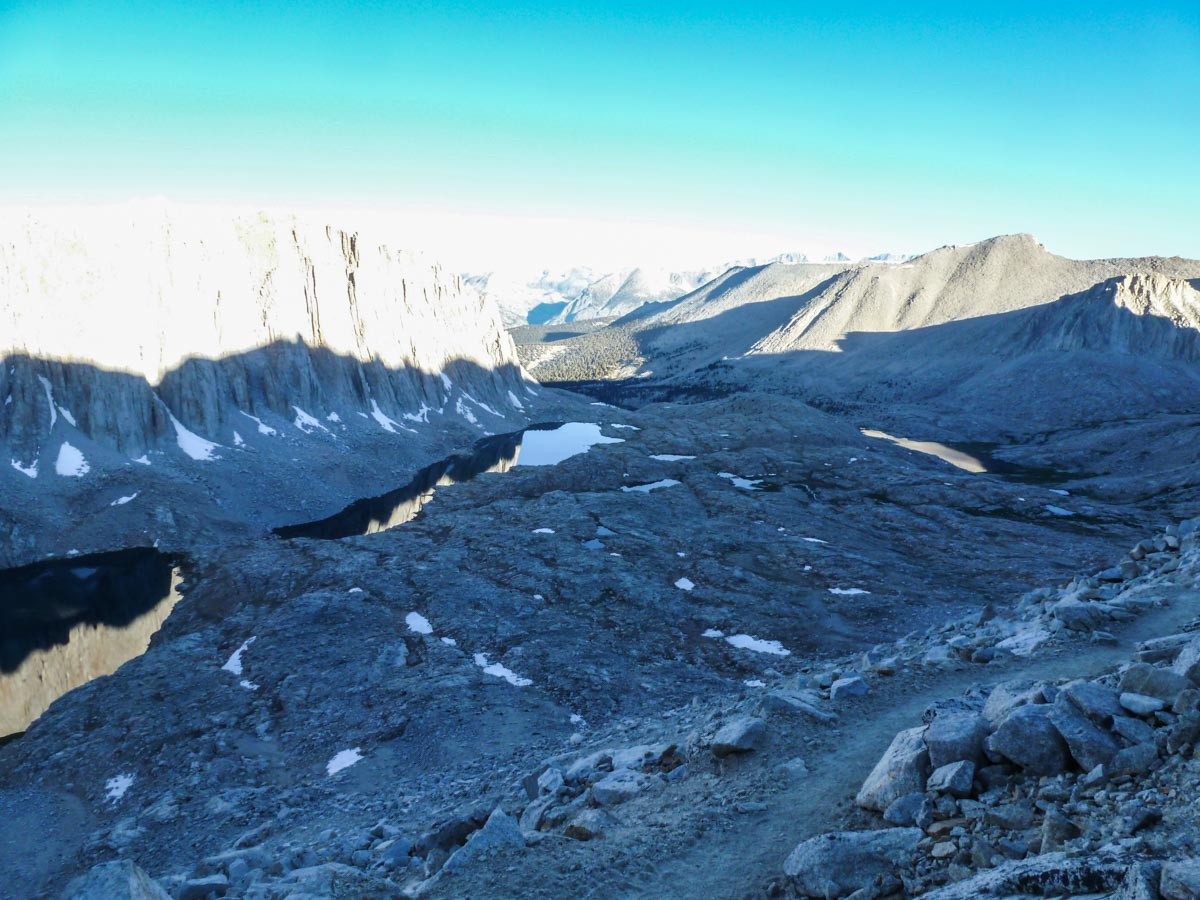 Looking down toward Guitar Lake en route to Mt Whitney
Looking down toward Guitar Lake en route to Mt Whitney
Once past the initial steep section, the breathtaking panorama of the Hitchcock Lakes unfolded. The subsequent ascent to Trail Crest, from 11,600 feet at Guitar Lake to 13,500 feet, was characterized by seven long, meticulously engineered switchbacks carved into the Sierra face. The sheer craftsmanship of the High Sierra Trail became a point of frequent admiration, prompting reflection on the incredible effort behind its construction.
During the climb, two of the boy scout groups, observed earlier, were overtaken. This small victory added a spring to the step, a testament to enduring fitness and determination on the trail.
Reaching Trail Crest and the Ridge to Mt. Whitney
Arriving at Trail Crest, a collection of around 20 backpacks marked the spot where sunrise-chasing hikers had transitioned to their summit attempts. Here, heavy packs were exchanged for a lighter day pack, loaded with essentials for the final push: lunch, jackets, and water.
Now, the ridge walk beckoned – a 1.9-mile stretch promising to test the limits of acrophobia even more intensely than Hamilton Gorge. The pace became deliberate, cautious, minimizing exposure at the “windows” – those dramatic trail sections flanked by sheer drops. With lighter loads, a sense of exhilaration and capability surged.
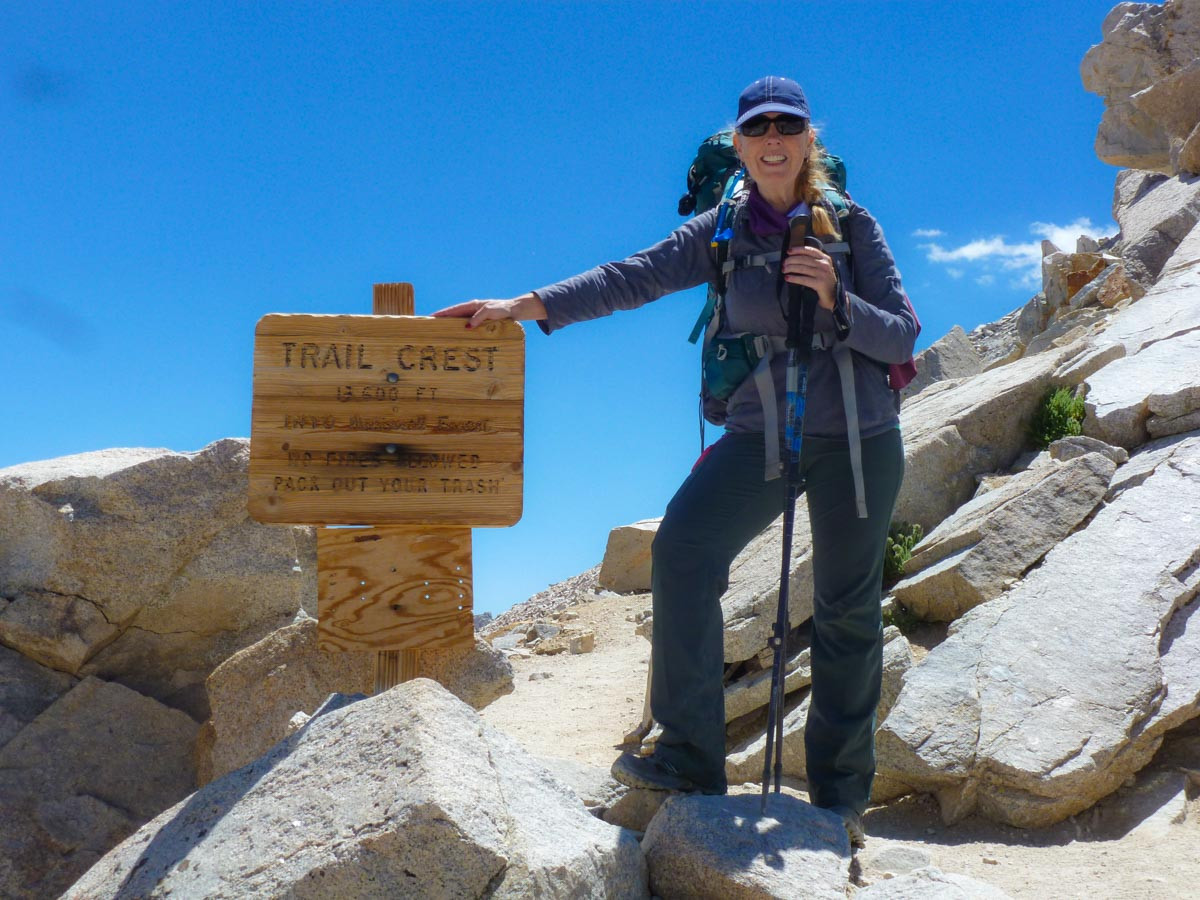 The sign at Trail Crest
The sign at Trail Crest
 Trail to Mt Whitney
Trail to Mt Whitney
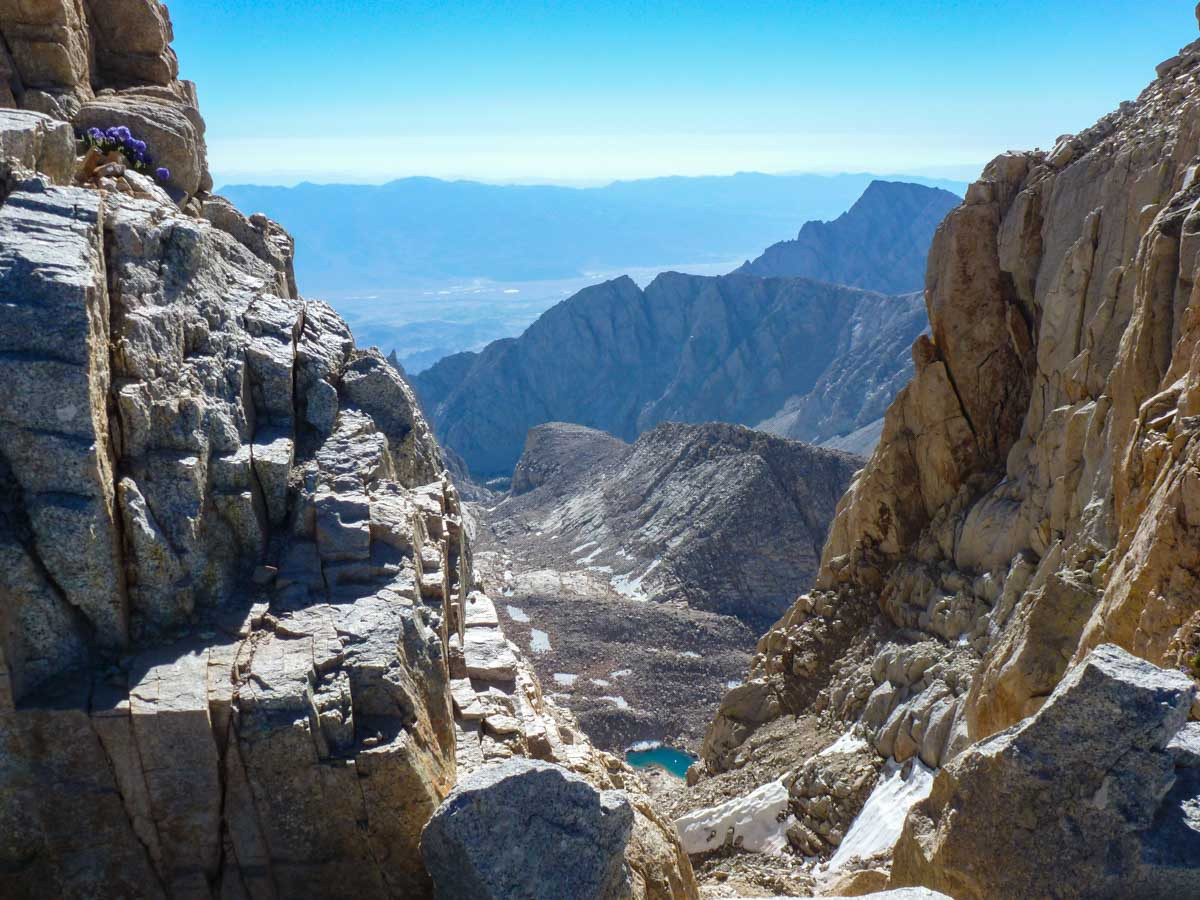 Windows on Lone Pine
Windows on Lone Pine
Summiting Mt. Whitney from Guitar Lake
As the summit hut of Mt. Whitney came into view, a snowfield presented an unexpected July challenge. Though largely tracked, the snow remained slippery, demanding careful footing and occasional detours over boulders to circumvent icy patches. Beyond the snow, the trail led eastward, directly to the summit.
The summit was reached in a satisfying 3 hours and 20 minutes from Guitar Lake. Calm winds and mild weather greeted the successful ascent, requiring no more than a long-sleeve shirt throughout the summit stay. The rest day spent at 11,600 feet near Guitar Lake appeared to have been a crucial factor in the surprisingly comfortable and efficient climb. Panoramic views and photo opportunities abounded, culminating in signing the summit register – mission accomplished.
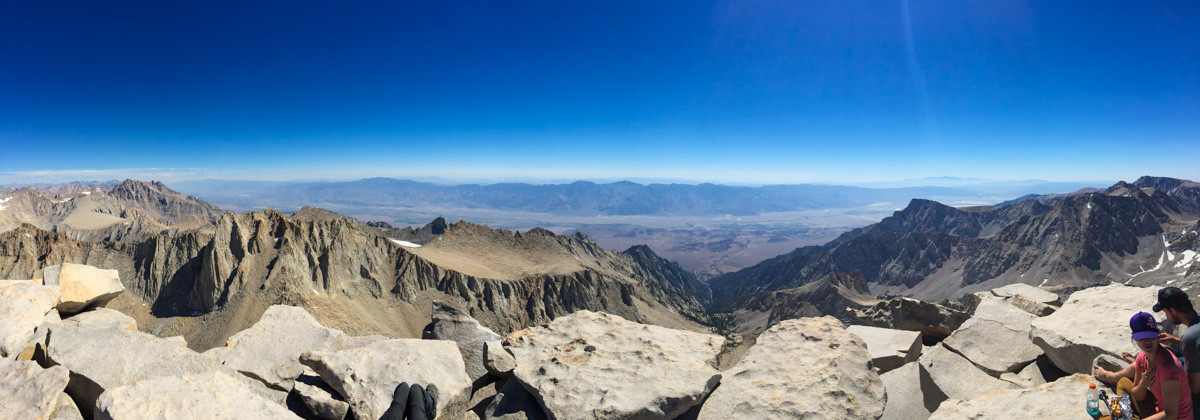 Eastern panorama from Mt Whitney
Eastern panorama from Mt Whitney
Descent to Outpost Camp via Trail Crest and 99 Switchbacks
After a 25-minute summit respite, the descent began. Surprisingly, the ridge walk back down posed less of a challenge to heights-related anxieties and Trail Crest was reached swiftly.
Re-shouldering heavier packs, the next phase was the descent down the infamous 99 switchbacks. Similar to the Kern River descent earlier in the trek, downhill sections, particularly with substantial pack weight, were less enjoyable. This segment proved to be a protracted and leg-wearying slog.
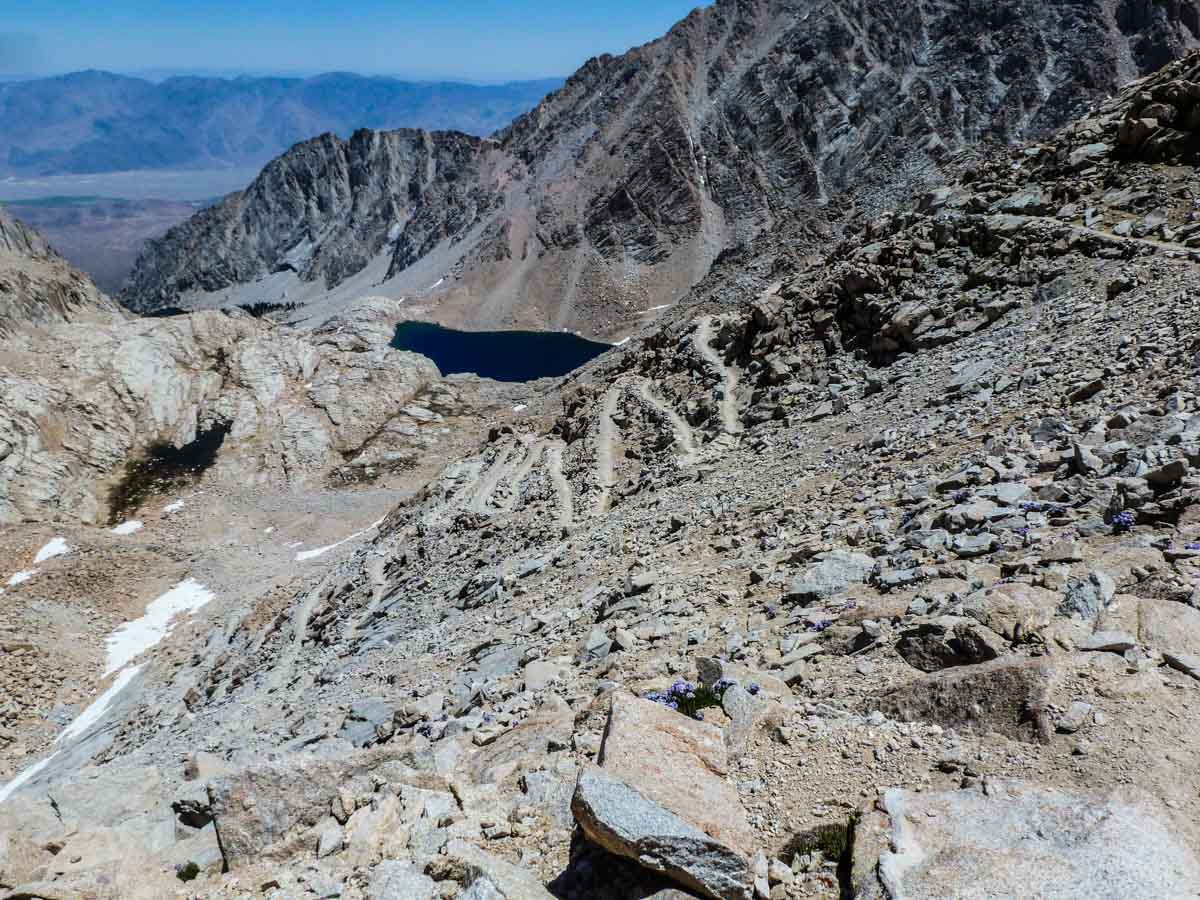 Mt Whitney 99 Switchbacks
Mt Whitney 99 Switchbacks
Initial thoughts of staying at Trail Camp were reconsidered upon arrival. The water source seemed questionable, and the camp’s crowded and less-than-scenic ambiance prompted a decision to continue further down to Outpost Camp.
The final miles from Trail Camp to Outpost Camp tested weary legs. The sight of Outpost Camp was a welcome relief. A genuinely pleasant campsite, accentuated by a vigorously flowing waterfall, offered a perfect end to the strenuous day. A campsite was secured, tents pitched, and relaxation ensued, aided by ibuprofen and refreshing drinks.
The Final Night and Departure from Outpost Camp
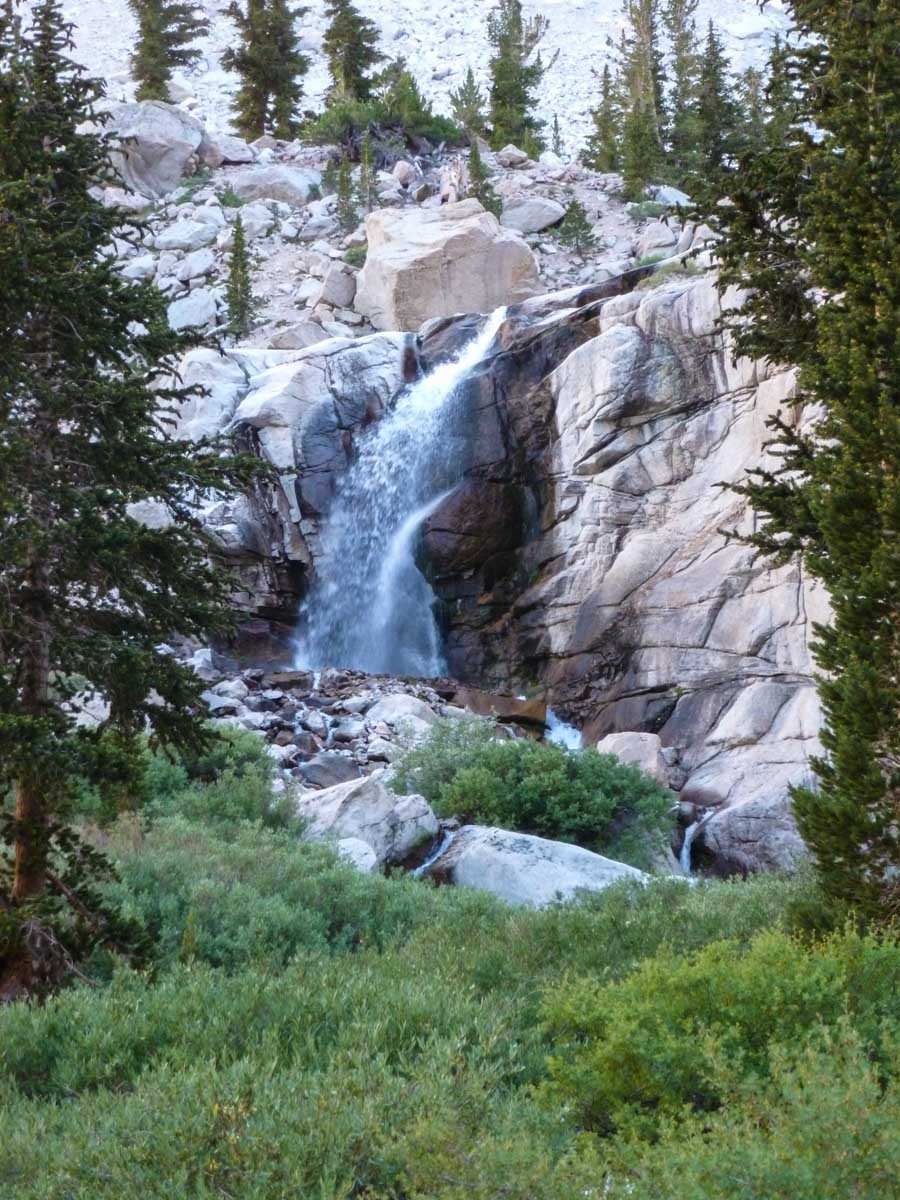 Waterfall viewed from Outpost Camp
Waterfall viewed from Outpost Camp
This night at Outpost Camp marked the final forest encampment, with only a short hike remaining to Whitney Portal the next day, concluding this segment of the High Sierra Trail adventure, which began its challenging day at the beautiful Guitar Lake. The journey from Guitar Lake to Mt. Whitney and down to Outpost Camp encapsulates a day of strenuous hiking rewarded with unparalleled views and the profound satisfaction of summiting a major peak.
